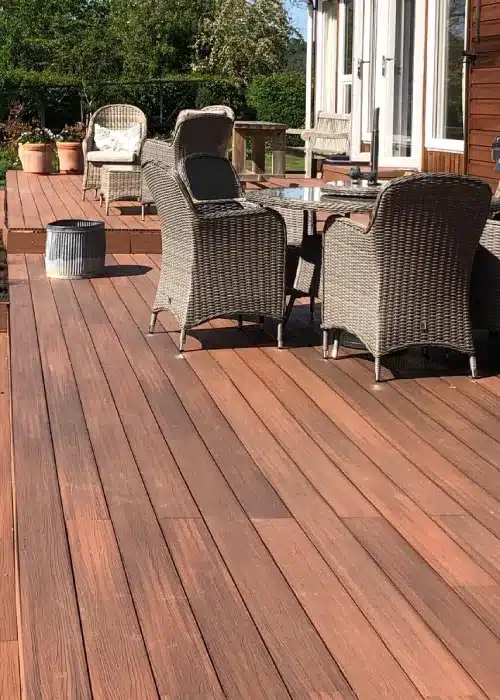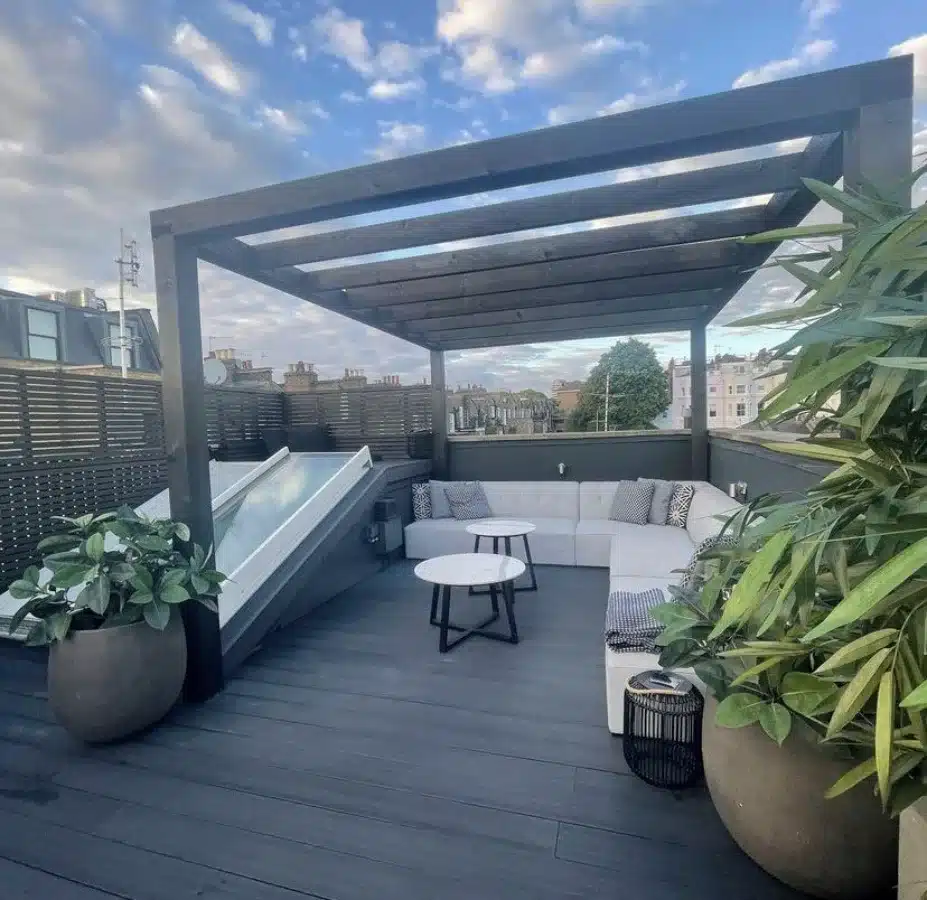Which Is Better between Composite and Plastic Decking?
When purchasing or researching about composite decking, you may of heard of been told its stain proof or stain resistance, so the question can composite stain is maybe surprisingly yes. Composite decking has resistant qualities against staining; however, it is not stain-proof.
Your composite decking can become stained from multiple different causes and can be dependent on different factors, such as the location of your decking. If you are using your decking for a BBQ area or to eat food on, you are more likely to experience grease or oil staining on your decking. Additionally, if your decking is placed under trees or bushes, you are more likely to encounter staining from mould or mildew from a build-up of leaves that will fall on your decking. Therefore, you will need to ensure you regularly check your decking surface for any staining, removing any stains immediately to avoid any permanent stain.
But the level of stain resistance alters depending upon the type of composite boards you purchase so what are they and how do they differ in relation to stain resistance?
What Is The Most Stain Resistant Composite Decking?
The level of staining is dependent upon the generation of the boards. First-generation boards are uncapped and are more likely to stain than second-generation boards. Second-generation boards, also referred to as capped boards, have a co-extrusion layer which is an added layer of plastic coating that further protects the decking board. We always recommend installing second-generation boards when concerned about staining, as this type of board is best protected.
Uncapped Boards Stain Resistance
Uncapped composite boards are classed as first generation boards in the sector. They are produced with a wood fibre surface layer, which offers an authentic look and feel to wood, but when it comes to stains, uncapped boards due to there surface layer can stain. If you spill wine, liquids, grease or oily food from a summers BBQ, if not cleaned quickly they will stain your composite deck.
This is due to as mentioned there surface layer, there surface layer made up of wood fibres will soak the liquids or grease and leave a stain mark if not cleaned.
Uncapped boards do need to be clean more regular than capped composite boards. There wood based surface if not cleaned regularly with hot soapy water, especially in the autumn and spring periods can stain from algae. Mould and mildew can grow on uncapped boards, now this will only happen if you don’t clean regularly and they do offer improved resistance when compared to wood, but uncapped boards can get mould and mildew and they do need to be cleaned to ensure this doesn’t occur.
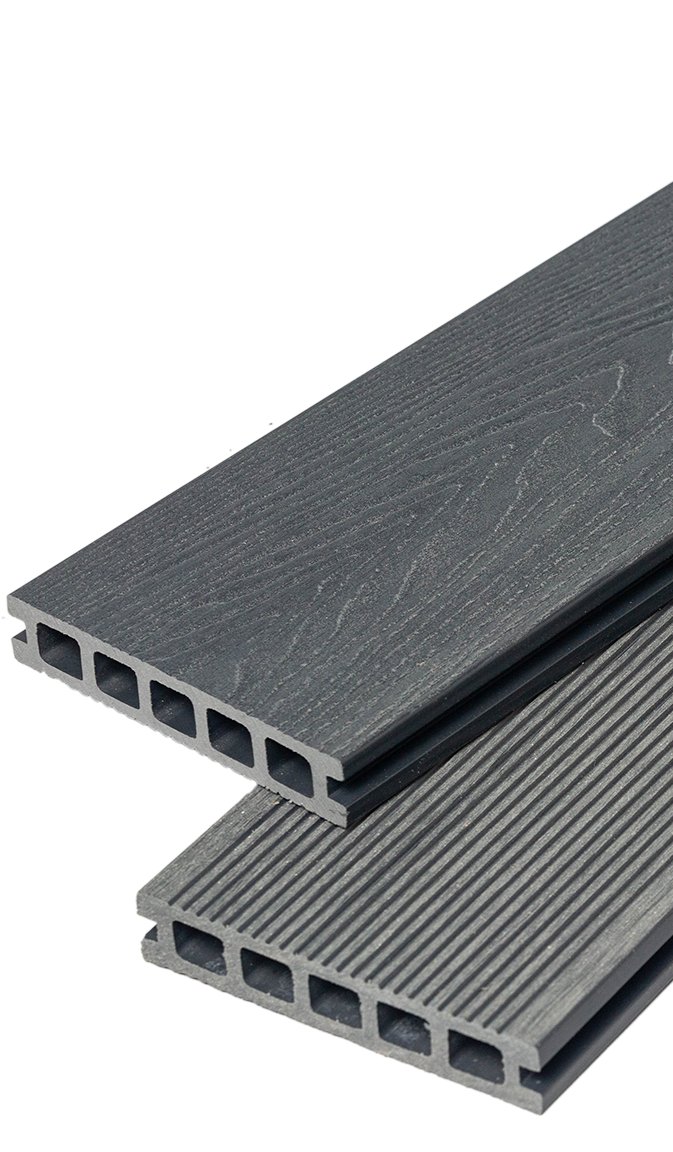
Capped Composite Boards Stain Resistance
Capped composite decking offer excellent stain resistance, they are produced with a PE surface layer in which wraps around the board offering increase water, UV and stains resistance properties. So, can capped composite boards stain the question is yes but not easily. Capped boards aren’t stain proof meaning stain can occur if left for long periods.
So how stain resistant are capped composite decking boards? capped boards are extremely stain resistance from all the test we have done and projects we have seem over the years, they are very hard to stain, meaning algae, mould and mildew wont stain your boards easily. If your boards are cleaned regular, we can confirm that the likelihood of this happening is extremely low to almost none. We have seen minor algae sains from customers that haven’t clean there decking for years, so please do keep this in mind.
When it comes to liquids, grease and other types of common stains, capped boards stand up to these too, the images on your right is uncapped and capped boards with water or minor stain marks, the way they got there was from leaving common stain substances for over 24 hours on there surface. Things like greasily butter, red wine, beer and even rust. You will see that all uncapped boards have slight makes, where the capped board in dark grey (second from the left) has none. To add even more data on capped stain resistance, we left vinegar on uncapped boards and capped boards for 24 hours, vinegar stains wood and many material if left for prolonged periods due to there acid make up. Uncapped boards shown stain marks where capped boards shown no stains makes, these two test show how stain resistance capped boards are and for us we would class them as extremely stain resistant.
So if your choosing a decking material and stain resistance is key, capped composite decking is definitely what you should considered. But what happens if you opt for uncapped boards and stain do occur?
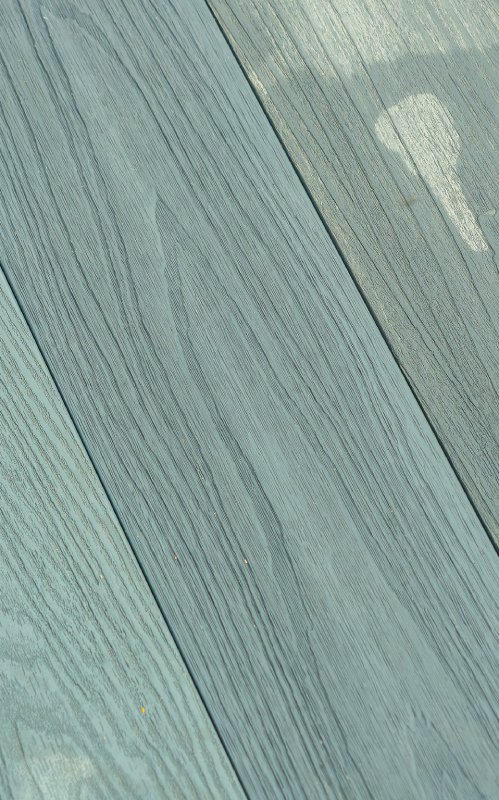
Removing Stains
In most cases, you can remove any staining from your decking through simple cleaning. All you will need is ammonia-free soap, dishwasher liquid and hot soapy water. Brush the soapy solution with a soft bristle brush along the grain of the decking boards. Once you have successfully removed any staining, you can gently hose your decking down with a garden hose. To learn how to accurately clean and maintain your composite decking, check out our maintenance guide.
Mould Stains
The best way to remove mould stains from composite decking is by scrubbing them with vinegar and baking soda. Vinegar and baking soda are natural decking cleaners and are great for removing mould. They can be used to remove a number of stains. For more information about using vinegar and baking soda on your deck please have a look at our article.
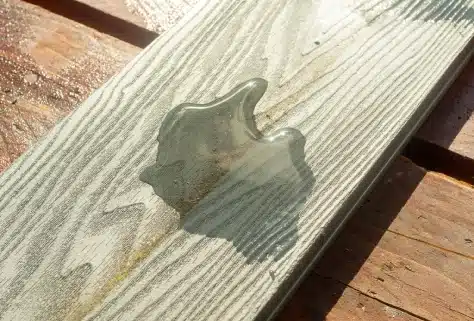
Animal Droppings
Bird, dog, and cat excrement, as well as urine, can stain the surface of composite decking. To remove these stains from your decking surface, you have to wash them. You can apply a liquid dishwasher to the surface of your composite decking and use a soft bristle brush to scrub it. Once the stains are gone, rinse the decking with water.
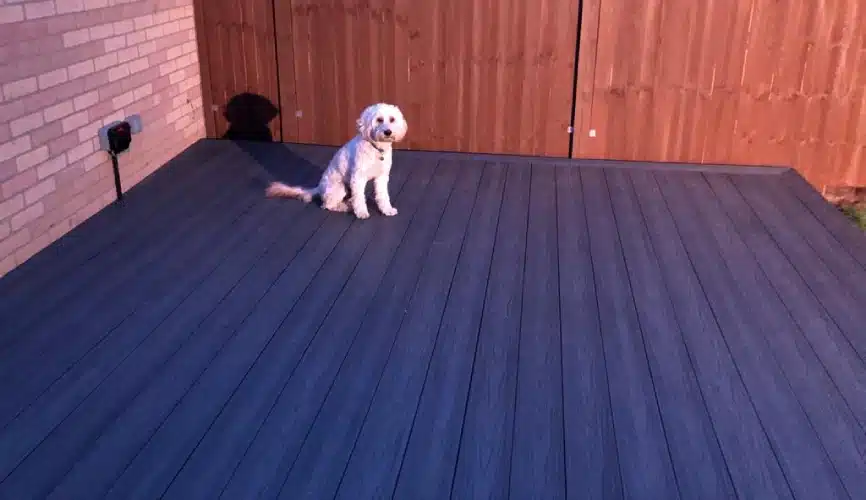
Oil or Grease Stains
Oils from food can stain the surface of your composite decking. It is especially common among homeowners who use their decking as a cooking and eating area. If you discover an oil spill on your decking, removing it is not difficult. You can clean the oil from your composite decking by scrubbing it with hot soapy water and rinse with water. Ensuring to remove any staining as soon as you notice it, as to avoid permanent damage to the boards.
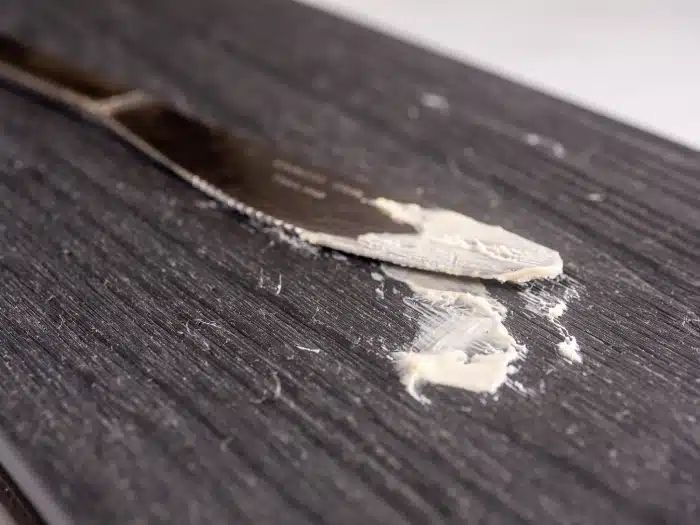
Hard Water Stains
Hard water can stain the surface of your composite decking. This is because it can leave white spots on your decking surface. These stains can disfigure the appearance of your composite decking. To remove the stains from your WPC decking, mix dishwasher soap with hot water in a bucket and use a soft bristle brush to scrub away hard water stains. Any puddles or large bodies of water should not be left on your decking surface, as this can cause damage to the decking surface.
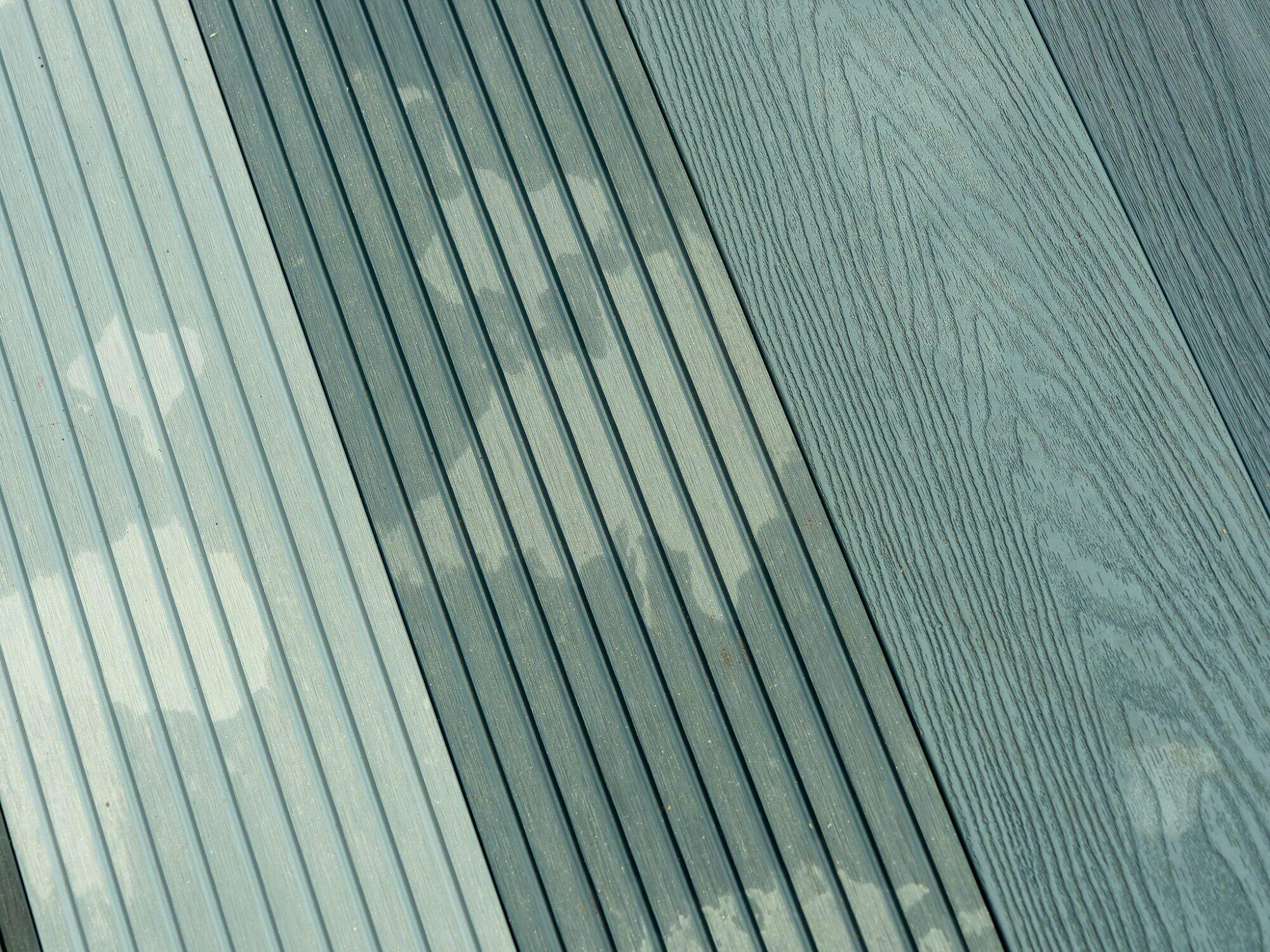
Conclusion
You can remove stains from composite decking by scrubbing the surface with hot soapy water. Apart from that, you can also use diluted vinegar and baking soda to clean your decking. Composite decking is easy to clean and will last longer when you take steps to maintain it. The best way to resolve any staining is to prevent staining in the first place and ensure you consider the location of where you want to install your decking beforehand. For the best decking against stains capped composite decking is by far the best, standing up against pre much every common stain substance there is in the market.
What Material Should I Use for My Rooftop Decking?



